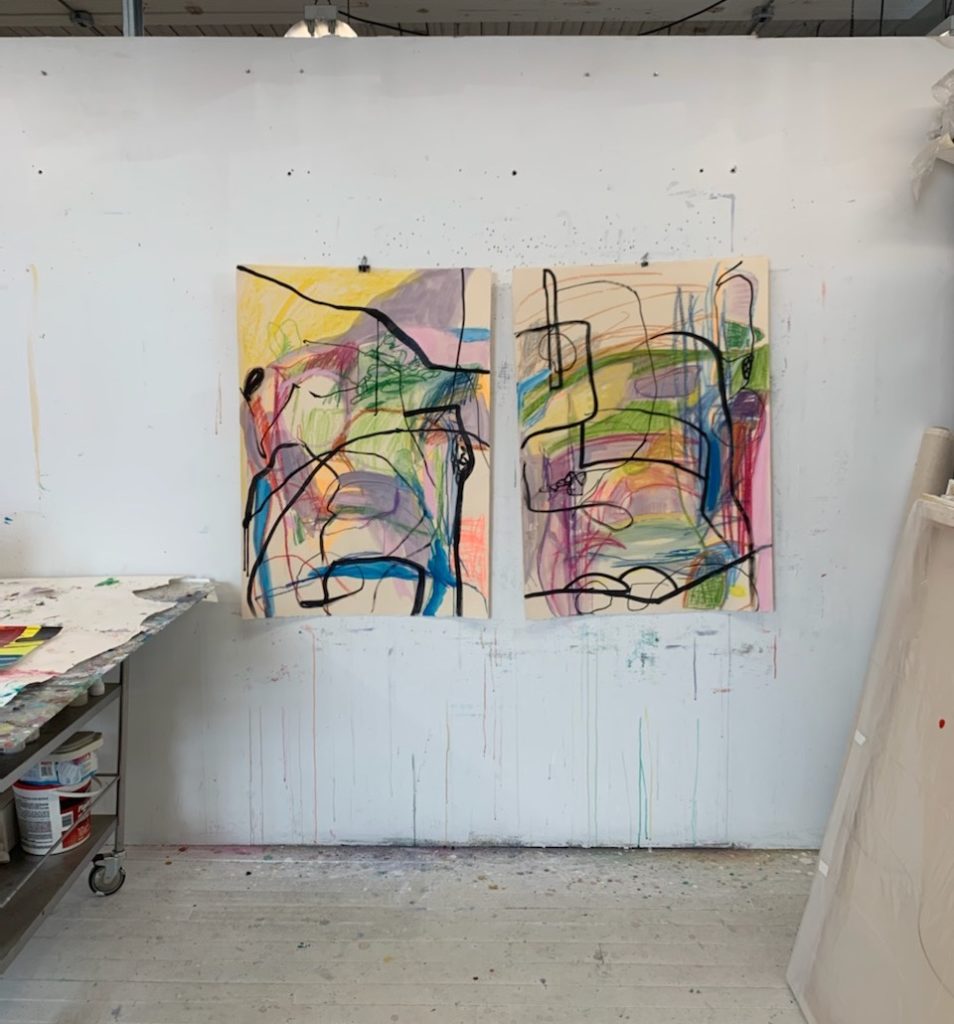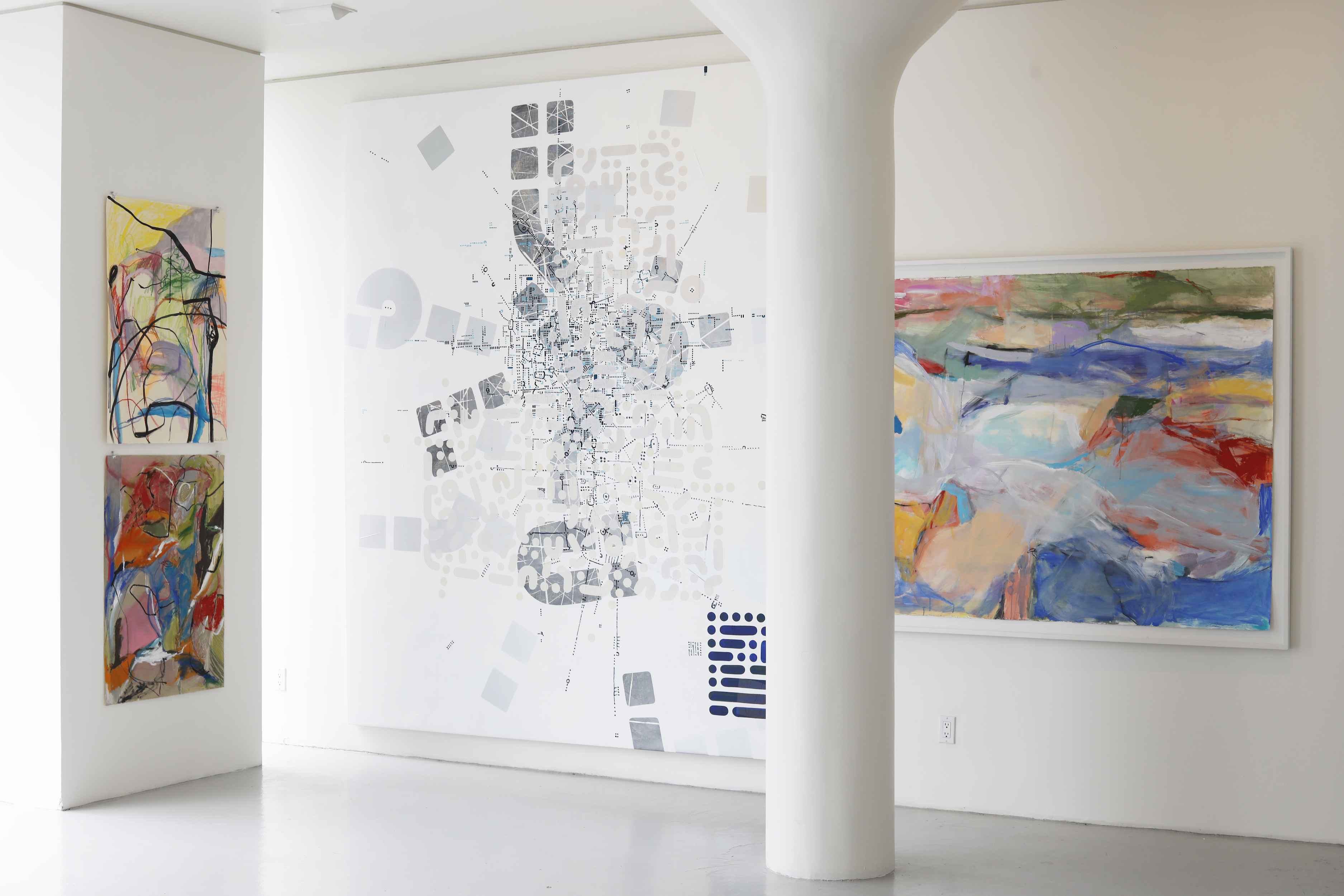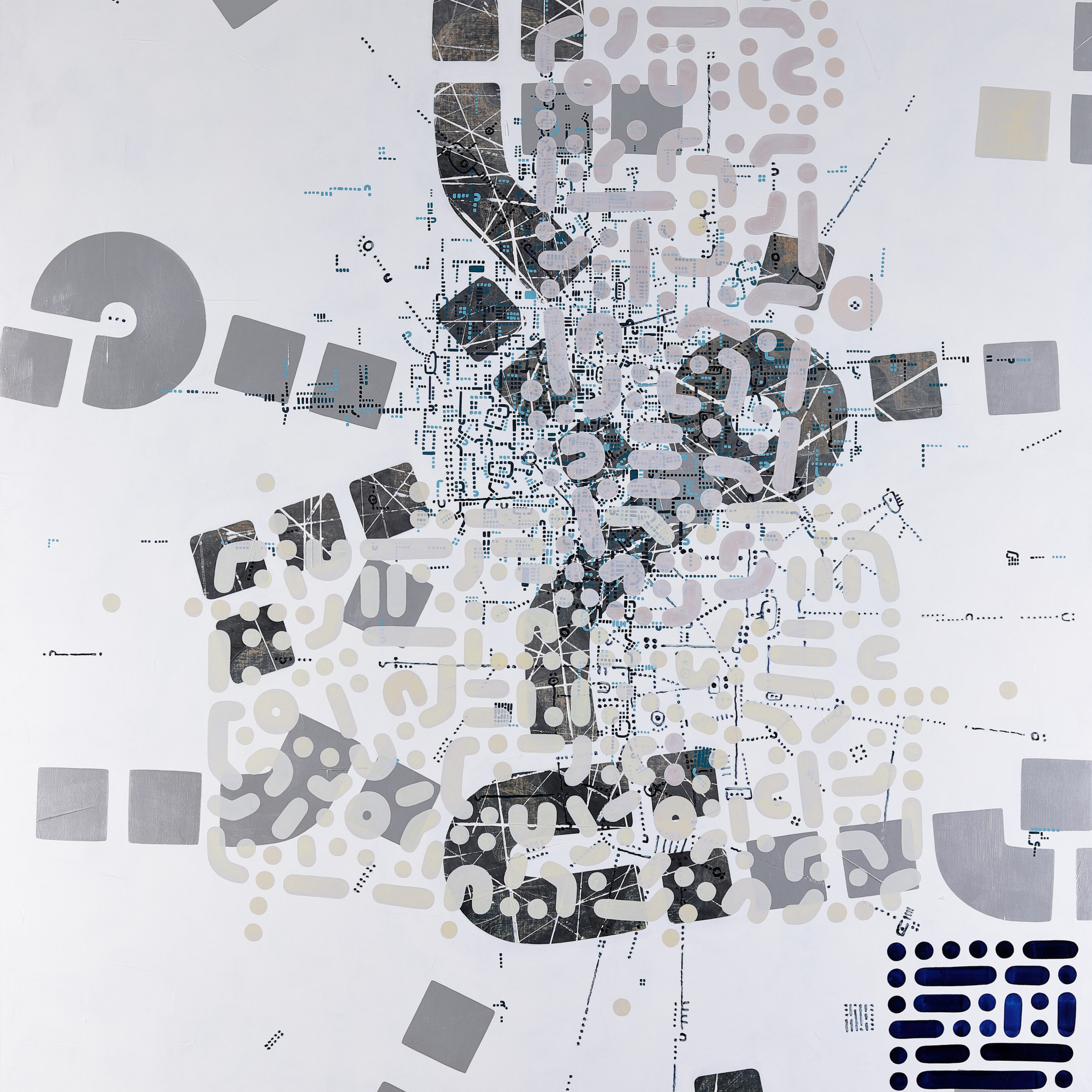Cynthia Byrnes Contemporary Art is proud to present Beauty/Destruction, a pop-up exhibition featuring the work of Claudia Mengel and Paul Michael Graves. Through a series of discussions both artists collaborated on their thoughts and feelings around the concepts of ‘beauty’ and ‘destruction’ before returning to their individual studios to create work influenced by their discourse.
The concept of beauty is the common ground on which Mengel and Graves began their journey by exploring their own ideas of what beauty is. Through their collaborations Mengel and Graves considered destruction not as a natural opposite to beauty but as an opposing, even grounding, force to beauty. While the logical opposite of ‘beauty’ is ‘ugliness,’ both artists were intrigued by the interaction between the two disparate concepts. Sidestepping a literal interpretation, both artists entertained broader applications destruction, particularly the effect of incorporating destructive elements into something beautiful.
In her new body of work, Claudia Mengel expresses these themes through color and tension. Using broad, loose strokes of pastel and acrylic, Mengel sows vibrant color across the paper, like a garden bursting with life. Her interpretation of destruction comes in the form of graphic black marks made with ink that slice through and tangle with these technicolor swaths. While such marks fail in rending the vibrant compositions useless or nonexistent, they create a sophisticated tension, drawing the eye across the page and punctuating the energy of the abstract colors with the stillness of the exposed paper.
A major influence on Mengel’s work for this this show is the experience of watching her neighbor’s abandoned garden slowly fall into disrepair and disorder. She recalls becoming captivated by watching through her window as the once tidy plot of land gradual disintegrated into natural chaos. Nature’s eventual reclaiming of the space prompted Mengel’s exploration of the point of collision between beauty, in both its constructed and organic forms, and destruction as the decay of something in one form and the creation of space and an opportunity for something else. This attention to growth, decay, and regrowth is evident in the implied energy behind her gestural marks.
For his new body of work, Paul Michael Grave’s created a series of large grayscale paintings melding together the broad geomatic language from his technobabble series and the fine, creeping linework of his rhizome series. Seemingly referencing circuitry, these compositions give the immediate impression of being governed by complex mathematic formulas, however upon closer inspection reveal an organic dissemination of line and shapes across the canvas in a language of the artist’s own creation. Working free-hand, Graves creates complexly contrasting textures ranging from the smooth expanse of the gray foregPRround, to the frenetic dashes of straightedge-applied color within the broader geometric shapes, to the fine, sketchy rhizomic linework. Deploying color sparingly under semi-translucent layers of gray, Graves expresses a more restrained beauty through this playful exploration of contrasts. He achieves this through a painstaking process of layering his distinct geometric ‘fonts’ by building, covering, and revealing different stages of the composition to reach the final (evolution/iteration). This layering process is, in part, Graves’ expression of destruction.
Influenced by his backgrounds in architecture and the military and inspired by the fractal patterns of broken glass or the spread of a blast radius, a technical, industrial quality shines through each piece. In both process and composition Graves conveys an organized, manmade destructive effort rather than the exuberant organic quality of Mengel’s works on paper.
Viewing Mengel’s and Graves’ work side by side we enjoy a feast of juxtapositions. Both artists approach their shared themes from similar starting points both with a focus on color and slant interpretations of destruction. Where Mengel’s works is wild and exuberant, balancing provocative gutsy colors with the tension of graphic interruption, Graves’ work is cool and organized, reigning in color to the extreme and inculcating viewers in tidy, intuitive patterns. Where Mengel embraces natural chaos, Graves’ implements constructed order. In viewing their work side by side, we get to enjoy distinct expressions of the influence of destruction over beauty. Together, their work achieves a similar effect in and of itself by balancing exuberance with tension and grounding vibrancy with restraint.
Tessa Rosenstein, Exhibition Manager, CBCA
May 2022































